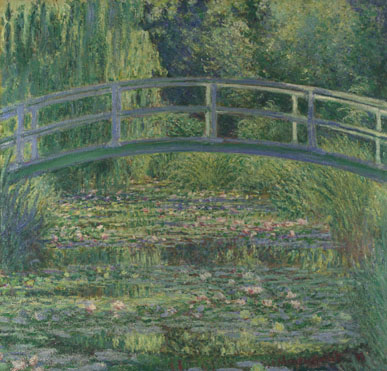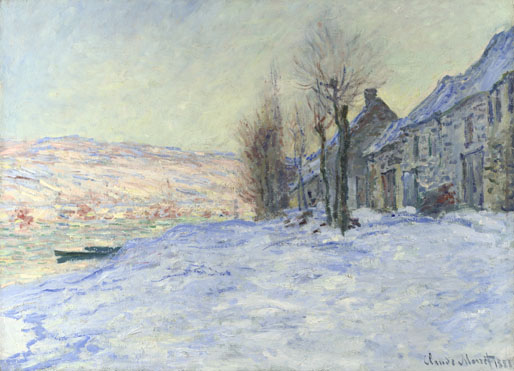If you love collecting art, you might wonder what features define Impressionist art. Knowing more about how Impressionist art is made can help you to appreciate the works you are seeing and collecting. This knowledge can also help you to recognize what is Impressionist art so that you know what you are looking at. Knowing more about a style of painting can make all the difference when it comes to appreciating art of all kinds.
Impressionism has changed slightly over time, but the basic painting style is still the same as it always has been. There are some additions from other painting styles that have made their way into the new Impressionist movement, but you can still easily recognize the Impressionist foundation for these new pieces. Impressionism is still as relevant as it ever was, and many people love collecting this kind of art to enjoy in their homes and galleries.
The Techniques Used in Impressionism Art
Impressionist art often makes use of techniques that are not used in other painting styles. This makes it much easier to recognize Impressionist works with an eye for the details. There is a new Impressionist movement that uses most of the painting techniques in this guide as well, making knowledge about them essential for those collecting new works in this genre. When you can pick out the various painting techniques in a piece of art, you will enjoy the works that you are viewing more than before.
1. Broken Color Technique
The broken color technique is one of the most recognizable parts of Impressionist painting. This technique is done by applying the paint in small, short strokes that cause the colors to blend together from afar. This is a patchwork style of painting that allows for really strong colors and blending when you take in the piece as a whole.
This Impressionist technique was introduced by Monet and Renoir. They painted by leaving dabs on the canvas that were not blended together. This means that the work might appear unfinished up close, but then when you step back, you can easily see the lovely colors that have been captured in the piece. One of the original complaints about Impressionism by contemporary critics was related to this painting technique that made the paintings look “unfinished” up close.
2. A Focus on the Light
The light in an Impressionist piece is one of the most critical parts of the painting style. The light and the impression of the subject matter are key to the Impressionist style. The light is always more important than anything else in an Impressionist piece. The sun, the shadow, and the time of the day are clearly revealed in an Impressionist work.
The natural light is carefully depicted in these pieces through various paint application techniques. One of the key aspects of recording the light in a work is refusing to use the color black. Shadows are made through the application of various blue tones in most cases. These kinds of pastel color choices create a much more natural sense of shadow and light than you get with other forms of painting.
Modern Impressionists do sometimes paint inside today, but the sense of light is still worked into the piece using the same techniques. Many of the most traditional Impressionist pieces were painted en plein air, which allowed the painter to see the light changing throughout the day right in front of them.
3. Wet on Wet Paint
Painting wet on wet is a technique that allows the painter to apply wet paint over other layers of wet paint. In many other styles of painting, all the layers of paint are allowed to dry before new paint is applied. The impression style of blending is provided to an Impressionist piece in part by this wet-on-wet paint technique. Wet paints partially combine and create new shades in the work that would not be possible with traditional painting techniques done in layers.
This painting style is much looser and less formed than other kinds of paint application styles. The edges in Impressionist pieces are quite soft due to this painting technique, and a sense of motion can be communicated through this painting trick as well. This is also a really useful painting style when working with pastel colors because it helps the pastels to blend together.
4. Impasto Painting
Impasto painting uses thick and short brush strokes that are quite visible and stands out clearly on the surface of the canvas. This volume and depth give a piece a sense of life and movement. Many modern Impressionists use this style extensively in their works to create drama and a sense of life in the subject matter. Impasto is one of the best ways to generate contrast without the use of the color black and other dark colors as well.
Impasto was not used by all Impressionist painters, but it can be quite common in works that seem to have a three-dimensional nature. Some of the things in paintings that have been created using this style appear to float right off the canvas, which is something that many collectors value quite highly. These kinds of works are also often quite large, which gives the painter the room to make the most of this kind of painting technique.
5. Minimal Color-Mixing
Impressionist pieces are not usually blended significantly, but some Impressionist painters avoided all color blending. This leads to a very stratified but unique blending experience when you step back from the work. The clean lines between the different layers of colors in these works can create a very special and refreshingly unique appearance to the painting. This is also at the heart of the sense of light and movement that many Impressionist paintings convey so clearly.
This is one of the things that makes Impressionist paintings lean in the direction of abstract art. While you know exactly what the subject matter of the work is, there are no sharp edges, and potentially, there are more shadows clearly presented in the work. Some Impressionist works have a lot of shadows in them, while others have almost none. When minimal color-mixing is in use, shadows tend to feature more clearly, but that does not mean that they are dark or harsh at all.

6. Use of the Paint Knife
The paint knife technique for application is more common in some Impressionist painters’ painting styles than others. This is a very specific way of layering paint, and it really lends itself to three-dimensional works. New Impressionist painters often used the painting knife almost exclusively, but there were also traditional Impressionists who used this tool to their advantage as well.
The shapes in a work that has been created with the use of the painting knife will be more clear and more defined than in other Impressionist pieces. It is very easy to see this painting style on the canvas, and those who are just starting out learning about Impressionist painting can often spot this painting technique right away.
7. A Sense of Being Slightly Unfinished
One of the key aspects of most Impressionist pieces is that they do not always appear to be completely finished. They might have a sense of being partially conceived or that a suggestion of shapes is used in the work. Even paintings like The Haystacks don’t clearly show what the focus of the work actually is. This suggestion of form and shape opens the way for color to be the focal point of the work, which is a key principle of this painting style.
Without hard edges or even strong forms, some Impressionist works become an experience that is all about color and emotion without any concern over the actual subject’s true shape. The original Impressionist painters felt that only depicting the vague shape of things allowed them to show the true nature of what was at the heart of a moment frozen in time. This was also a key means of making a break from the limited and restrictive painting style of realism that the Impressionists wanted to disavow with their works.
Impressionist Works Use Clearly Defined Technique
There are many key features of Impressionist paintings that you will learn to recognize over time. You will find that you will learn to recognize the various aspects of Impressionist works with ease. Many of the painting techniques that are associated with Impressionism are quite unique to this one style of painting which makes it even easier to identify Impressionist works.
If you are collecting art, or you just want to know more about this style of painting, you need to learn about the techniques that make these pieces special. The various ways that impressionist works differ from other painting styles are key to the movement that changed the way painters made their living. The subject matter, colors, and emotions of painting were forever changed by the Impressionist movement. Knowing how to recognize these painting techniques can help you to enjoy art even more and to collect art like a pro.

